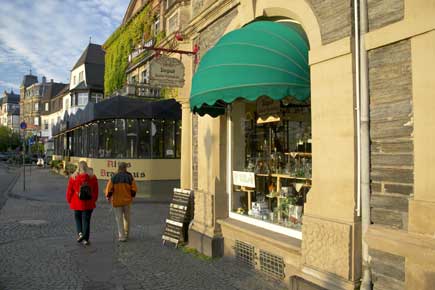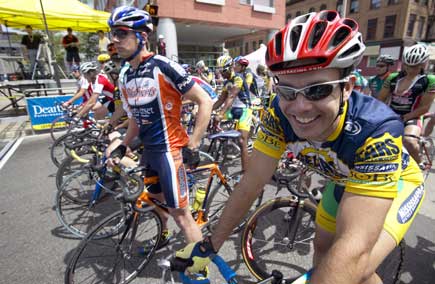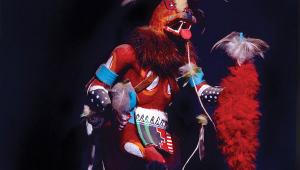Expand Your Horizons; Five Tips for Great Wide Angle Photos
 |
|
|
Wide Angle Characteristics
Wide angle lenses include more of any scene than longer lenses, useful whenever
you want to include more in a single shot: a large group of friends or an entire
landscape vista, for example. But short focal lengths have other significant
characteristics as well. The most noteworthy is the exaggerated relationship
between near and far objects. The distance between foreground and background
objects appears to be much greater than our eyes perceive. Called "expanded"
perspective, this is actually an optical illusion but it's a compelling
one.
As another factor in the expanded perspective, the relative size of objects also appears to be distorted. Those near the camera become prominent, appearing unusually large. Meanwhile, more distant subjects are rendered much smaller than expected. Move in close to the primary subject to exploit this characteristic.
 |
|
|
Linear distortion is another trait. Tilt the camera upward to include an entire building and you'll notice that vertical lines appear to converge so the subject appears to be leaning backward. Called "keystoning" this distortion of lines occurs because the base of the building is closer to the lens than its top. Distorted perspective occurs whenever the camera is not held parallel to the primary subject lines. Indoors, for example, vertical lines will seem to converge or lean inward, making the entire room seem to be out of plumb. As we'll see, you can prevent this problem or exaggerate it for creative effects.
Because we rarely use wide angle lenses for extreme close-ups with high magnification, they can produce images with great depth of field. At any f/stop, the range of acceptably sharp focus is quite extensive. Set a very small aperture such as f/16 and everything -- from foreground to background -- can be sharply rendered.
 |
|
|
Wide Angle Shooting Techniques
The shorter the focal length, the more obvious the wide angle characteristics
will be. And other issues will arise too, some producing technical problems.
In order to avoid disappointment with your wide angle -- and especially ultra
wide angle -- images, it's worth becoming proficient with short lenses.
Consider the following techniques as a starting point for the best possible
results.
1. Avoid "distortion". For the most accurate rendition of vertical subjects (buildings, trees, etc.) hold the camera level, so its back is perfectly parallel to the subject. This will prevent "keystoning": the "leaning over backwards" look. If the photo then includes too much of the foreground area, crop it later, using image-editing software in your computer.
2. Maximize unconventional perspective. For creative purposes, you may want to exploit the "distorted" perspective. In that case, tilt the lens upward at an extreme angle, perhaps by shooting from ground level, for a dramatic effect. Exaggerate converging verticals with a group of skyscrapers, a huddle of football players, or the interior of a stadium, for example.
3. Focus for great depth of field. For the greatest range of acceptably sharp focus at any f/stop, try this. Set focus at a point roughly a third of the way into a scene: a landscape, field of wildflowers, cathedral interior, etc. This method is most convenient with manual focus, a feature included with an increasing number of digicams.
4. Simplify. An extremely wide angle of view can encompass
many elements which compete for viewer attention. Often, there is no single,
large subject that is clearly the center of interest. Consequently, an ultra
wide is not the ideal lens for snapping distant landscapes from a roadside lookout.
In order to make images with a clear message or purpose, move in closer to exclude
extraneous details. Fill the frame with a few desired objects, or a sweep of
red tulips at a botanical gardens, for example.
5. Minimize light falloff. Darkening at the edges of the frame
occurs to some extent with most wide angle zooms, particularly at wide apertures
(very small f/numbers). For more even illumination select a smaller aperture
such as f/8. This is particularly useful whenever a subject of one color (sky,
building, etc.) fills the frame. Note too that a thick polarizing filter can
cause darkening at the corners (vignetting) when the mount intrudes into the
image area. A special "thin ring" polarizer, designed for wide angle
lenses, should prevent that problem.
 |
|
|
Final Recommendation
Whether you decide to buy a very short zoom for an SLR, or an ultra
wide angle adapter, it's worth experimenting to make the most effective
images. Look for suitable subject matter and try unusual viewpoints to exercise
your creativity. Some of the pictures will seem "distorted" or "unnatural"
but others will be "dynamic" or "dramatic". Whether for
unique photographs or for problem-solving in tight quarters, your new lens or
accessory will surely prove to be a suitable investment.
 |
 |
|
 |
 |
|
 |
||
|
||












































